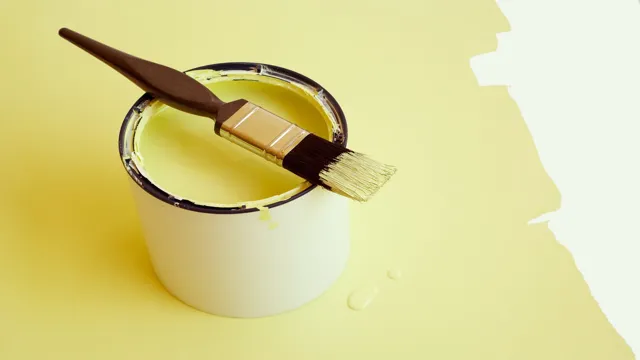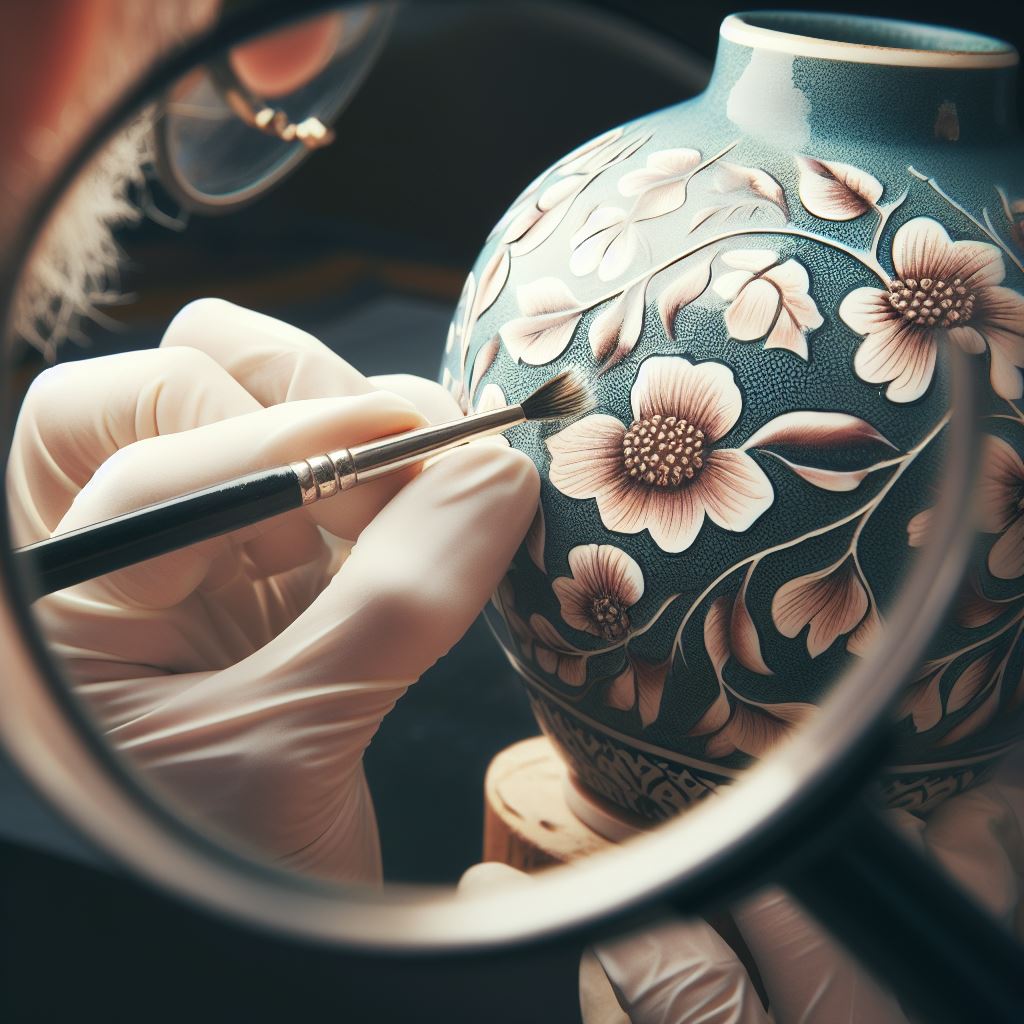Unleashing the magic of color on any surface can be an exhilarating experience, especially when you’re working with enamel paints. From their vibrant hues to their glossy finish, enamel paints have the ability to transform the mundane into the extraordinary. Yet, mastering the art of enamel painting involves more than just a random stroke of the brush.
It requires patience, precision, and a deep understanding of essential techniques. This blog post aims to delve into the world of enamel painting, shedding light on the key strategies and methods that can help you achieve a glossy, professional-looking finish. So, whether you’re a seasoned artist or a beginner eager to explore this medium, strap in for an enlightening journey through the vibrant landscape of enamel painting.
Definition of Enamel Painting
Enamel painting, a technique that results in a glassy, polished finish, is a method employed by artists to add a touch of sheen and durability to their work. Achieving this glossy finish can be a labor of love, requiring a keen eye for detail and a steady hand. Essential techniques include proper surface preparation, meticulous application, and patient drying.
The result? A vibrant, resilient piece of art that stands the test of time. Mastering enamel painting techniques can truly elevate an artist’s work, adding a luxurious dimension to each piece.

History of Enamel Painting
Dating back to the Byzantine Empire, enamel painting has consistently been admired for its glossy finish. Mastering the art of achieving this lustrous effect involves a series of meticulous techniques. First, the enamel paint – a mixture of powdered glass and pigments – is applied to a metal surface.
It is then fired at high temperatures, causing the paint to melt and form a smooth, shiny surface. The artist must carefully control the firing process to prevent the paint from becoming too runny or burning. This delicate balance, coupled with the artist’s skill, results in the unique glossy finish that defines enamel painting.
Enamel Paint Types
Dipping your brush into the world of enamel paints is akin to entering an artist’s paradise, an arena where the glossy finish reigns supreme. Enamel paints are hailed as the reigning champion when it comes to achieving a glossy finish, but the journey to its successful application is not a frivolous trot in the park, but rather a strategic waltz. Understanding the main types of enamel paints and mastering the essential techniques to apply them is the key to unlocking their full potential.
There are two main types of enamel paints: oil-based and water-based or latex. Oil-based enamel paint is renowned for its durability and high-gloss sheen, making it an ideal choice for surfaces that endure high traffic or extreme weather conditions. Its long drying time may be seen as a setback by some, but a blessing in disguise for those who appreciate its self-levelling quality that can hide brush strokes, resulting in a sleek, glossy finish.
On the other hand, water-based enamel paint, while not as durable as its oil-based counterpart, is celebrated for its easy application and quick drying time. Its low VOC content makes it an environmentally friendlier choice, and it’s more resistant to yellowing over time. The glossy finish from water-based enamel is subtler, but still offers an appealing sheen.
Achieving the glossy finish with enamel paints is a dance of patience and precision, involving several techniques. The surface preparation is paramount: it needs to be clean, dry, and primed to ensure maximum adhesion. Applying thin, even coats of paint using a high-quality brush or roller and allowing adequate drying time between coats can also enhance the glossiness.
Lastly, a clear topcoat can be applied for an additional layer of gloss and protection. In the realm of enamel paints, achieving a glossy finish is not a mere stroke of luck, but a result of careful selection of paint type and meticulous application. With the right techniques, enamel paints can transform any surface into a glossy masterpiece.
You May Also Like: Mastering Art Collection Care: Essential Tips to Maintain Your Artwork
Oil-Based Enamel Paint
Achieving a glossy finish with oil-based enamel paint isn’t a feat for the faint-hearted; it demands a blend of patience, precision, and proper technique. The brilliance lies not just in the quality of the paint, but in your mastery of essential enamel painting techniques. These techniques include surface preparation, paint mixing, brushwork, and the art of patience in between coats.
It’s akin to a well-choreographed dance, with each step crucial to the final masterpiece. So, buckle up, as we explore the ins and outs of enamel painting, and transform your art from drab to fab.
Water-Based Enamel Paint
Achieving a glossy finish with water-based enamel paint might seem daunting, but with the right techniques, you’re on your way to a masterpiece. The trick lies not just in the application but also in the preparation. A well-prepped surface, the correct brush, and the right amount of thinning can all contribute to that desired glossy finish.
It’s all about being patient, meticulous, and not shying away from multiple coats. Remember, in the world of enamel painting, haste is the antithesis of perfection. So, buckle up, get your paintbrush ready, and let’s delve into the essential techniques of enamel painting.
Acrylic Enamel Paint
Achieving a lustrous finish with acrylic enamel paint is an art form that requires practice and precision. Whether you’re working on a car, a piece of furniture, or a canvas, the key to success lies in mastering essential enamel painting techniques. From the initial surface preparation to the final buffing, each step plays a crucial role in the end result.
When done right, the glossy finish can transform a dull surface into a vibrant, high-shine masterpiece. So, let’s dive into the world of enamel painting, where creativity meets technique, and bring that glossy finish to life!
Essential Tools for Enamel Painting

- Brush Selection:
- Opt for natural hair bristle brushes for a smooth and even application.
- Enamel Paint Quality:
- Choose high-quality enamel paints known for their hard and glossy finish.
- Be mindful of brand reputation, as not all enamel paints are created equal.
- Thinner Usage:
- Invest in a good-quality thinner to improve paint viscosity.
- Thinning enamel paint contributes to easier application and a glossier finish.
- Workspace Essentials:
- Ensure a well-lit workspace for accurate assessment of paint consistency.
- Consider adding a magnifying lamp for intricate details in your artwork.
- Patience is Key:
- Enamel painting requires multiple layers of paint.
- Allow adequate drying time between each coat for a smooth and shiny result.
Brushes for Enamel Paint
Achieving a glossy finish requires not only the right enamel paint but also the perfect brush. It’s an art that goes beyond simply dipping a brush in a paint can. To master essential enamel painting techniques, you need to understand the intricacies of brush types and their respective roles in giving your work a polished look.
So, let’s delve into the world of brushes for enamel paint, their unique characteristics, and how they can help you create a flawless glossy finish. Prepare to brush up your knowledge and stroke your way to a masterful, glossy enamel painting.
Surfaces Suitable for Enamel Paint
Achieving a glossy finish with enamel paint is an art that requires the right surface, technique, and patience. Enamel paint adheres best to surfaces such as metal, wood, and ceramics, offering a hard, glossy finish that’s both beautiful and durable. Techniques such as proper surface preparation, using the appropriate brushes, and applying multiple thin coats can help achieve this lustrous finish.
While the process may be time-consuming, the stunning results are worth every minute spent. Experience the joy of transforming ordinary surfaces into glossy masterpieces with the magic of enamel paint.
Techniques for Glossy Finish
Creating a luxurious, glossy finish is a coveted skill in the world of painting, but achieving this effect can often feel like trying to capture a rainbow – elusive and tricky. However, don’t let the complexities deter you. With the right techniques and a bit of practice, you can create a glossy finish on almost any surface.
The secret to achieving a glossy finish lies in enamel paint, which is renowned for its glossy properties and durability. Enamel paint is often the first choice for those seeking a high-shine, smooth finish that can withstand the test of time. But like any painting process, applying enamel paint requires precision and patience.
To start, it’s essential to prepare the surface properly. This means cleaning it thoroughly and sanding it to create a smooth base. Skipping this step could result in a subpar finish, with bumps and imperfections marring the glossy effect.
Next, you need to apply a primer. This will help the enamel paint adhere better to the surface and create a uniform color. Once the primer is completely dry, you can start applying the enamel paint.
For a truly glossy finish, it’s best to apply several thin layers, rather than one thick one. This allows the paint to dry evenly and helps prevent streaks or brush marks. Finally, you need to let the paint cure.
This is a critical step, as it’s during this phase that the paint develops its signature glossy finish. It can take anywhere from a few days to a week for enamel paint to fully cure, so patience is key. In conclusion, achieving a glossy finish with enamel paint isn’t rocket science, but it does require a methodical approach and an eye for detail.
Preparation Before Painting
Achieving a glossy finish requires meticulous preparation and the mastery of essential enamel painting techniques. Before setting brush to surface, ensure your work area is clean and well-lit. The object you’re painting should be free of dust and debris.
Applying a primer can help create a smooth canvas, ready for the next steps. The art of enamel painting is not just about slapping on a coat of paint, it requires patience and precision. Mastering the correct brush strokes, proper layering, and knowing when to apply thin or thick layers, all contribute to that desired glossy finish.
Keep these tips in mind and you may just find your project shining with a professional gloss.
Enamel Paint Application Techniques
Achieving a glossy finish is an art that requires meticulous attention to detail, and understanding the fundamental enamel painting techniques is paramount. The key to mastering the high-gloss finish lies in the preparation: a thoroughly cleaned, smooth surface, a properly mixed paint, and the right brush or roller. The application process too needs care to avoid brush strokes and drips.
Let’s not forget the crucial role of optimal drying conditions to prevent dust from spoiling the glossy effect. So, put on your artist’s hat, arm yourself with patience, and let the lustrous journey of enamel painting begin.
Troubleshooting & Maintenance
| Aspect | Tips for Achieving a Glossy Finish in Enamel Painting |
|---|---|
| Surface Preparation | Ensure the surface is clean, dry, and free of dust or grime. Use a primer for a better base, enhancing the paint’s adherence and glossiness. |
| Application Technique | Apply multiple thin layers of enamel paint instead of a single thick one for a more uniform and glossy finish. |
| Drying Time | Be patient as enamel paint takes longer to dry. Rushing the process can result in a dull finish. |
| Maintenance | Regularly clean and dust the painting to preserve its glossy finish over time. |
Common Problems and Solutions
Achieving a glossy finish with enamel paint can often be a challenging task fraught with common problems. However, mastering the essential techniques can turn these obstacles into minor speed bumps on the road to a perfect finish. Whether it’s dealing with unwanted brush strokes, combating drips, or navigating the delicate balance of application thickness, understanding the right methods is key.
This blog section will delve into practical solutions and proven strategies, all delivered with a dash of wit and clever insight. So, buckle up and get ready to transform your enamel painting journey into a smooth, glossy ride.
Long-Term Care for Enamel Painted Surfaces
Maintaining the lustrous sheen of enamel painted surfaces may seem like a Herculean task, but it’s not as daunting as it appears. With the right techniques, achieving a glossy finish is within everyone’s reach. Enamel painting techniques, when executed properly, result in a finish that’s not only visually stunning but also remarkably durable.
The secret lies in meticulous preparation, the right choice of tools, and a keen eye for detail. The payoff? A long-lasting finish that adds an enduring touch of charm and sophistication to your space. Remember, the beauty of enamel lies in its resilience, but it still warrants careful, long-term care.
Frequently Asked Questions (FAQs)
What are some essential techniques for achieving a glossy finish with enamel paint?
Some essential techniques for achieving a glossy finish with enamel paint include proper surface preparation, the right choice of brush or roller, thinning the paint correctly, applying multiple thin layers instead of one thick one, and allowing proper drying time between layers.
How important is surface preparation in achieving a glossy finish with enamel paint?
Surface preparation is extremely important in achieving a glossy finish with enamel paint. This includes cleaning the surface thoroughly to remove any dirt or grease, sanding it to create a smooth base, and priming it to ensure proper adhesion of the paint.
What tools are best for applying enamel paint to achieve a glossy finish?
For a glossy finish, it is best to use high-quality brushes or a foam roller to apply enamel paint. These tools help to distribute the paint evenly without leaving brush marks or bubbles that can mar the glossy finish.
How does the consistency of enamel paint affect the glossy finish?
The consistency of the enamel paint can greatly affect the glossy finish. If the paint is too thick, it can create a textured finish instead of a smooth, glossy one. On the other hand, if the paint is too thin, it might not cover the surface properly. Thus, it’s important to thin the paint to the right consistency.
How does applying multiple thin layers of enamel paint contribute to a glossy finish?
Applying multiple thin layers of enamel paint helps to achieve a glossy finish as it allows each layer to dry thoroughly, preventing drips or runs. It also builds up a thicker coat of paint, which tends to look glossier than a single thin layer.
What is the role of drying time in achieving a glossy finish with enamel paint?
Proper drying time is crucial in achieving a glossy finish with enamel paint. If the paint doesn’t dry properly between coats, it may result in a dull or uneven finish. It’s generally recommended to wait at least 24 hours between coats to ensure the paint has dried thoroughly.
Conclusion
In conclusion, achieving a glossy finish with enamel paint is a task that requires keen attention to detail, adequate preparation, and mastery of techniques. It’s not just about applying the paint; it’s about laying it on in the correct way, using the right tools, and having the patience to allow it to dry properly. It’s an art form akin to making a perfect cup of coffee – it’s not just about the beans, but how you grind them, the water temperature, and even the cup you serve it in. So, go ahead, grab your brush (or your spray can), your enamel paint, and your object of choice. With the right techniques, you’ll be creating glossy masterpieces in no time.

Matthew C. Moore is a passionate artist with an insatiable interest in color and painting. His creative journey takes form on his blogsite, Painthubs, where he shares his love for art with the world. Through his captivating content, Matthew seeks to inspire and connect with fellow art enthusiasts, showcasing the power of colors and the beauty that can be brought to life through painting.
